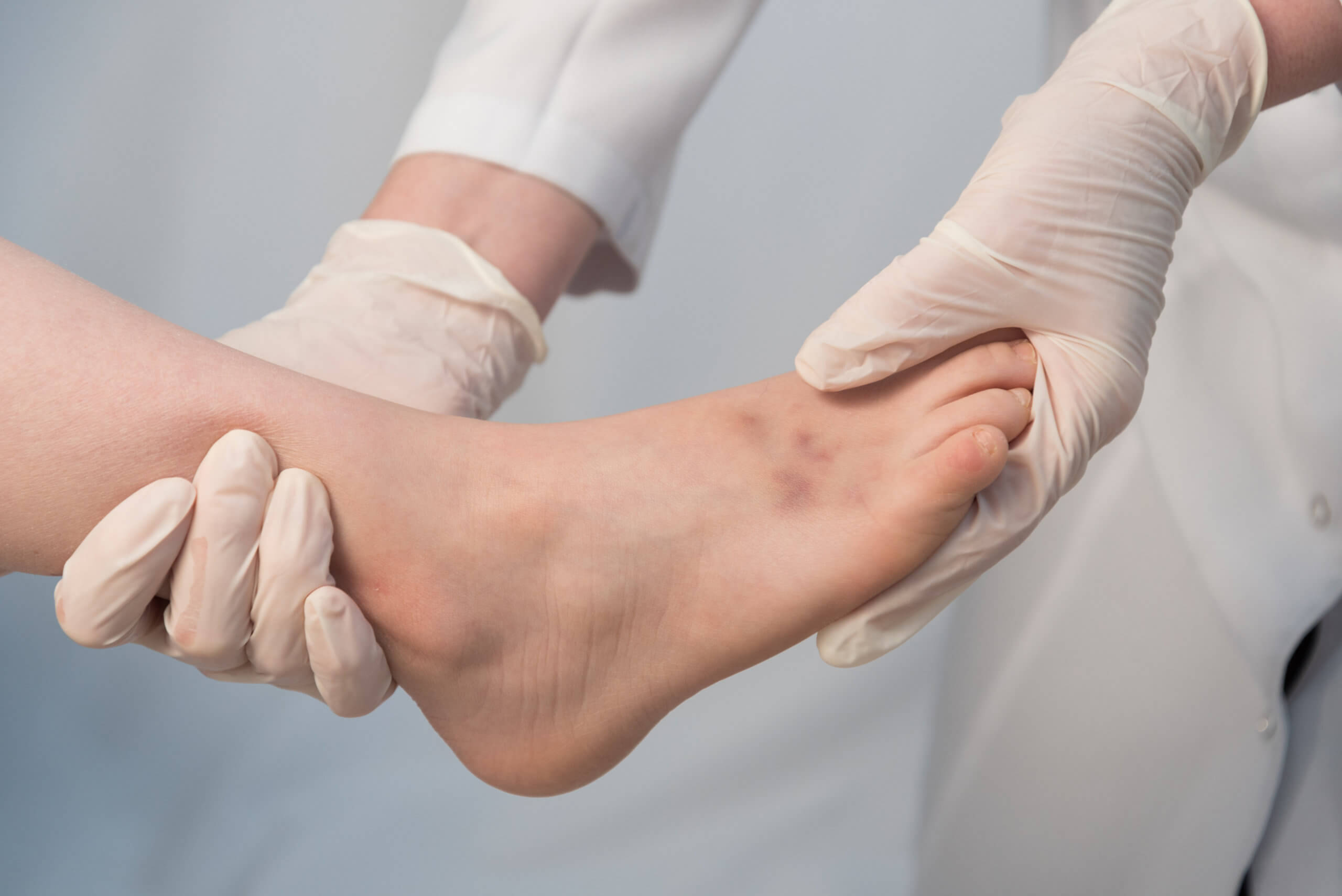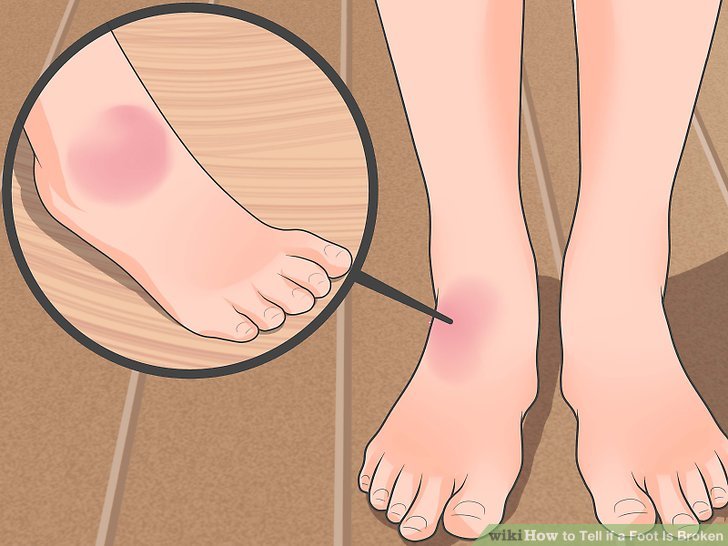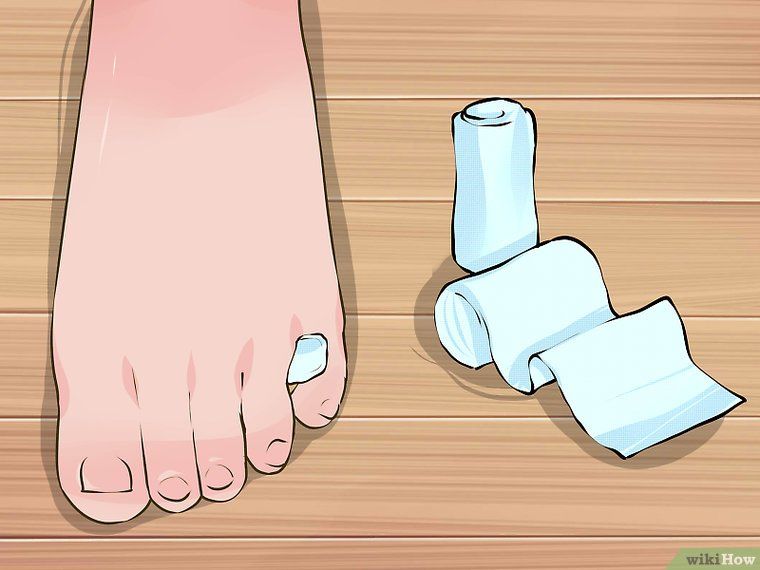How to tell your toe is broken. How to Identify and Treat a Broken Toe: Expert Guide
How can you tell if your toe is broken. What are the signs and symptoms of a broken toe. When should you seek medical attention for a toe injury. How is a broken toe treated at home and by medical professionals. What complications can arise from an untreated broken toe.
Signs and Symptoms of a Broken Toe
Recognizing a broken toe can be challenging, as the symptoms may be similar to those of a stubbed or bruised toe. However, there are several key indicators that can help you determine if your toe is indeed broken:
- Severe pain that persists for more than a day
- Swelling and bruising
- Difficulty walking or bearing weight on the affected foot
- Visible deformity or misalignment of the toe
- Stiffness or inability to move the toe
Is the pain level a reliable indicator of a broken toe? While pain intensity can vary, a broken toe typically causes more severe and persistent pain compared to a simple stubbed toe. If you experience excruciating pain or a tingling sensation that doesn’t subside within a day, it’s more likely to be a fracture.

Comparison: Broken Toe vs. Stubbed Toe
Understanding the differences between a broken toe and a stubbed toe can help you determine the severity of your injury:
| Symptom | Broken Toe | Stubbed Toe |
|---|---|---|
| Pain Duration | Persists for multiple days | Resolves within a few hours to a day |
| Swelling | Significant and lasting | Minimal or short-term |
| Appearance | May appear misshapen or point in an odd direction | No change in shape or direction |
| Color | Can turn red, blue, black, or yellow | May have short-term redness |
| Movement | Strange movement or bone shifting when touched | Normal movement |
Can you walk on a broken toe? While it’s possible to walk on a broken toe, especially if it’s a minor fracture, doing so often causes increased pain and may worsen the injury. It’s best to avoid putting weight on the affected foot until you’ve consulted a healthcare professional.
At-Home Assessment and Initial Care
If you suspect you have a broken toe, there are several steps you can take at home to assess the injury and provide initial care:

- Compare the injured toe with its counterpart on the other foot to check for swelling or deformity.
- Gently try to move the toe. If you feel bone movement or experience severe pain, it may indicate a fracture.
- Apply ice to the injured area for 15-20 minutes at a time, several times a day, to reduce swelling and pain.
- Elevate the foot above heart level to minimize swelling.
- Avoid putting weight on the injured foot and use crutches or a cane if necessary.
Do you need to remove nail polish to check for a broken toe? While not always necessary, removing nail polish can help you better observe any discoloration or bruising under the nail, which may indicate a fracture or other injury.
When to Seek Medical Attention
While minor toe fractures can often be treated at home, certain situations warrant immediate medical attention:
- Severe pain that doesn’t improve with over-the-counter pain medications
- Open fractures where the bone has broken through the skin
- Significant deformity or misalignment of the toe
- Numbness or tingling in the toe or foot
- Signs of infection, such as fever, increased redness, or warmth around the injury
- Injuries to the big toe, which plays a crucial role in balance and walking
Should you go to the emergency room for a broken toe? In most cases, a broken toe doesn’t require emergency treatment. However, if you experience severe pain, an open fracture, or signs of infection, it’s best to seek immediate medical care at an emergency room or urgent care center.

Diagnostic Procedures for Broken Toes
When you visit a healthcare provider for a suspected broken toe, they may perform the following diagnostic procedures:
- Physical examination: The doctor will visually inspect the toe and gently manipulate it to assess pain and range of motion.
- X-rays: These imaging tests can confirm the presence and location of a fracture.
- CT scan or MRI: In some cases, more detailed imaging may be necessary to evaluate complex fractures or soft tissue damage.
Are X-rays always necessary to diagnose a broken toe? While X-rays are the most common and reliable method for diagnosing toe fractures, they may not always be necessary for minor injuries. Your healthcare provider will determine if imaging is needed based on your symptoms and physical examination.
Treatment Options for Broken Toes
The treatment for a broken toe depends on the severity and location of the fracture. Common treatment options include:
Conservative Treatment
- Rest, Ice, Compression, and Elevation (RICE) therapy
- Buddy taping: Taping the injured toe to an adjacent healthy toe for support
- Wearing stiff-soled shoes or special footwear to protect the toe
- Over-the-counter pain medications to manage discomfort
Medical Interventions
- Reduction: Realigning the broken bone if it’s displaced
- Casting or splinting for more severe fractures
- Prescription pain medications or anti-inflammatory drugs
- Surgery in rare cases, such as complex fractures or open wounds
How long does it take for a broken toe to heal? The healing time for a broken toe typically ranges from 4 to 6 weeks. However, this can vary depending on the severity of the fracture and the individual’s overall health. Following your healthcare provider’s instructions and avoiding strenuous activities during the healing process can help ensure proper recovery.

Potential Complications of Untreated Broken Toes
Failing to properly treat a broken toe can lead to various complications, including:
- Chronic pain and stiffness
- Deformity of the toe
- Arthritis in the affected joint
- Difficulty wearing shoes or walking comfortably
- Increased risk of future injuries due to improper healing
Can a broken toe heal on its own without treatment? While minor toe fractures may heal on their own, seeking proper medical evaluation and treatment is crucial to ensure optimal healing and prevent potential complications. Proper care can help reduce pain, promote faster healing, and minimize the risk of long-term issues.
Prevention and Long-Term Care for Toe Injuries
To reduce the risk of toe injuries and promote long-term foot health, consider the following tips:
- Wear properly fitting shoes with adequate toe room and protection.
- Use caution when walking barefoot, especially on uneven surfaces.
- Remove tripping hazards from your living space.
- Strengthen your feet and ankles through exercises recommended by a physical therapist or podiatrist.
- Maintain a healthy weight to reduce stress on your feet and toes.
- Follow up with your healthcare provider as recommended after a toe injury to ensure proper healing.
How can you prevent re-injury of a previously broken toe? After recovering from a broken toe, it’s essential to gradually return to normal activities and continue wearing supportive footwear. Engaging in foot-strengthening exercises and maintaining good overall foot health can help reduce the risk of future injuries.

By understanding the signs and symptoms of a broken toe, seeking appropriate medical care when necessary, and following proper treatment protocols, you can ensure optimal healing and minimize the risk of long-term complications. Remember that while minor toe injuries may heal on their own, it’s always best to consult with a healthcare professional to determine the most appropriate course of action for your specific situation.
How Do I Know If My Toe is Broken?
Medically Reviewed by Dr. Rachel N. Verville
August 24, 2017
Experiencing intense pain after stubbing your toe or dropping a heavy object on your foot is common. The toes contain thin and delicate bones, which makes them particularly susceptible to injury. As a result, it can be challenging to determine whether you need to see a foot doctor for a potential broken bone or give your toe a few days to heal on its own. Don’t ignore persistent pain in your toe – schedule a consultation with a qualified podiatrist to ease your concerns.
There are several signs to look for if you think you may have a broken toe:
Pain Level
If you are experiencing excruciating pain in your toe or an ongoing tingling sensation, that is a strong sign that you have broken a bone. If walking makes the toe pain more intense, that is usually evidence of a break.
Pain Duration
Pain from stubbing your toe often resolves within a few hours to a full day. If the pain persists for multiple days, you are likely dealing with something more serious, such as a broken bone.
If the pain persists for multiple days, you are likely dealing with something more serious, such as a broken bone.
Swelling
Compare your injured toe with its matching toe on the opposite foot. If there is a notable difference in size, that might mean you have broken a bone. Note that broken bones usually result in swelling, while stubbing your toe rarely does.
Shape and Direction
Stubbing your toe will not change the overall shape or the direction your toe points. If you notice either of these symptoms, you may have a break and should seek care from an experienced foot doctor immediately.
Color
A broken bone may cause your toe to turn red, blue, black, or yellow. Stubbing your toe, on the other hand, might cause short-term redness but nothing long-lasting or extreme.
Touch
One way to appraise your toe is to move it by hand. If the toe moves strangely or you can feel the bone itself moving, that likely points to a break.
When to Call a Podiatrist for Your Broken Toe
It may be tempting to assume your broken toe will simply heal on its own without clinical care. However, leaving a toe to heal on its own may lead to further complications down the road, in some instances requiring you to undergo foot surgery. It is always best to evaluate and treat the issue before it reaches that point.
Failing to have your broken toe treated promptly may result in the following complications:
- Reduced foot movement (the result of the bones healing back in strange or unnatural ways).
- An increased risk of developing arthritis in the foot.
- Pieces of broken bone splintering off (making complete healing all but impossible without surgical intervention).
For these reasons, we recommend contacting a podiatrist whenever you suspect a broken toe, especially if you experience persistent pain, bruising, or swelling.
You’re in Good Hands with Dr.
 Verville
Verville
If you’re looking for reliable foot care in the Frisco or Dallas Metro Area, Dr. Verville at RNV Podiatry is an excellent option. With more than a decade of experience in foot surgeries, you can trust Dr. Verville to care for your feet. Learn more about broken toes and other types of foot fractures.
Broken toe – NHS
A broken toe can be painful, but you do not usually need to go to hospital. There are things you can do to treat it at home.
Check if you have a broken toe
You may have broken your toe if it’s:
- red or bruised
- painful and swollen
- difficult to walk on
Information:
Do not worry if you’re not sure if it’s broken or just bruised, treatment is usually the same for both.
Urgent advice: Get help from NHS 111 if:
- you have a bad cut or wound after injuring your toe
- you have severe toe pain
- your child has hurt or broken their toe
You may need further treatment in hospital, such as a boot, cast or surgery.
You can call 111 or get help from 111 online.
You could also go to your nearest urgent treatment centre.
What we mean by severe pain
- Severe pain:
- always there and so bad it’s hard to think or talk
- you cannot sleep
- it’s very hard to move, get out of bed, go to the bathroom, wash or dress
- Moderate pain:
- always there
- makes it hard to concentrate or sleep
- you can manage to get up, wash or dress
- Mild pain:
- comes and goes
- is annoying but does not stop you doing daily activities
Immediate action required: Go to A&E if:
- you think you have broken your big toe
- your toe is pointing out at an odd angle
- the bone is sticking out of your toe
- there was a snap, grinding or popping noise at the time of injury
- you feel tingling in your toe or foot or it feels numb
If you cannot get to A&E by yourself, call 999 for an ambulace.
What you can do about a broken toe
Doctors will usually suggest you treat a broken toe at home first if:
- it’s not your big toe
- the bone is not sticking out of your foot
- your toe is not pointing at an odd angle
- there’s no wound on your toe
Broken toes usually heal within 4 to 6 weeks, but it can sometimes take several months.
Do
take ibuprofen or paracetamol for the pain and swelling
rest your foot and keep it raised
hold an ice pack (or a bag of frozen peas) wrapped in a towel on your toe for up to 20 minutes every few hours
wear wide, comfortable shoes with a low heel
avoid walking around as much as possible
strap up your broken toe – put a small piece of cotton wool or gauze between your sore toe and the toe next to it, then tape them together to support the sore toe
Don’t
do not strap up your toe if it’s pointing out at an odd angle or you have hurt your big toe – get medical advice
do not put ice directly on your skin
do not walk or stand for long periods
do not wear tight, pointy shoes
do not play any sports like football, rugby or hockey for 6 weeks or until the pain eases
do not try to treat your child’s toe – take them to an urgent treatment centre or A&E
A pharmacist can help with a broken toe
You can ask a pharmacist about:
- the best painkiller to take
- what you need to strap up your toe
- if you need to see a GP
Non-urgent advice: See a GP if:
- pain and swelling has not started to ease 2 to 3 days after you injured your toe
- it still hurts to walk 6 weeks after injuring your toe
- you have diabetes and have injured your toe – foot problems can be more serious if you have diabetes
They may send you for an X-ray to see if you need any further treatment.
Page last reviewed: 06 May 2022
Next review due: 06 May 2025
What to do if you break your toe? – useful articles from specialists
Any fracture can have unpleasant consequences, even if we are talking about a broken toe. Knowing what to do when you break your toe can help you navigate a difficult situation. Read our first aid tips – and you will have a clear idea of how to diagnose a fracture (let’s talk about its characteristic signs and symptoms), how it can be cured.
A broken toe requires immediate medical attention. Its treatment is long and complex. If you want to avoid a number of inconveniences (for example, difficulty in movement due to improperly fused bone), you need to learn how to determine the presence of a fracture in a timely manner. Improper treatment can cause loss of the former shape and flexibility of the limb. Therefore, at the first suspicion of a fracture, it makes sense to consult a doctor.
Broken toe: causes and symptoms
Most often, the phalanges of the fingers are injured when an object that is too heavy falls, due to a strong blow or accidental twisting of the leg. In some cases, fractures occur due to diseases such as osteomyelitis (bone infection), diabetes, cancer, osteoporosis.
Most fractures are stressful: a microcrack occurs that does not cause a rupture of the skin or displacement of the bones. Less commonly, comminuted fractures occur: the bone breaks in several places. Diagnosing an open fracture is easy: you will see the bones sticking out. Proper assessment of the severity of the injury allows the appropriate treatment to be determined.
The main symptoms of a broken toe include:
- visible swelling;
- unbearable pain;
- deformity of the phalanx;
- bruising, bruising;
- crunching when trying to move the leg;
- tingling, cooling, numbness;
- open wound with bleeding.

Having broken the thumb, a person cannot fully walk, because it is this finger that accounts for most of the body weight. A broken little finger does not make a person unable to walk. But in both cases, the pain will be palpable.
What complications are possible after a broken toe?
Do not think that a finger phalanx injury is a trifle. A number of problems arise after an injury. In the presence of a hematoma, removal of the nail is possible. In case of improper tissue fusion, surgical intervention is required: an osteotomy is performed to eliminate the deformation of the joints and bones.
In addition, there is a risk of infection if there is inflamed skin near a broken finger. The presence of redness, swelling, pus, as well as the softness of the tissues and fever are evidence of infection. In this case, antibiotics are indispensable.
In order to avoid the consequences of a fracture, you need to seek medical help from qualified specialists. Diagnosis and treatment of injured limbs is carried out not only by chiropractors and orthopedists, but also by osteopaths and physiotherapists. Specialists make diagnoses after examination and examination of x-rays. In some cases, computed tomography, MRI, ultrasound, bone scans are required.
Diagnosis and treatment of injured limbs is carried out not only by chiropractors and orthopedists, but also by osteopaths and physiotherapists. Specialists make diagnoses after examination and examination of x-rays. In some cases, computed tomography, MRI, ultrasound, bone scans are required.
Features of the treatment of broken toes
If we are talking about a stress fracture, then the first thing you will need to do is stop any activity, apply an ice compress to the damaged area (it will reduce inflammation and stop internal bleeding). Ice should be applied for 10-12 minutes every hour. Experts recommend keeping the injured limb elevated, it can be put on a roller from a blanket or pillow. Be sure to bandage the broken finger, connecting it to the adjacent one. For this, a regular medical waterproof bandage is suitable. The family doctor will recommend anti-inflammatory drugs. The next 5-6 days you will have to walk in shoes with a free toe.
With an open fracture, the help of an orthopedic surgeon is required. He will reduce the broken finger and apply a splint. You will need to use crutches for about 2 weeks. For walks, you will need to purchase special orthopedic shoes. Anyone who wants to quickly recover from a fracture should eat foods that are rich in vitamins, minerals, magnesium, calcium, and boron.
He will reduce the broken finger and apply a splint. You will need to use crutches for about 2 weeks. For walks, you will need to purchase special orthopedic shoes. Anyone who wants to quickly recover from a fracture should eat foods that are rich in vitamins, minerals, magnesium, calcium, and boron.
Important point! Doctors almost always recommend a tetanus shot if you have an open wound.
Practice shows that the healing of broken fingers takes about 1.5 months. If during this period the problem is not solved, the doctor will take new x-rays and adjust the treatment. Only an expert can qualitatively assess the degree of bone healing.
Despite the fact that the fractures in question heal easily, the consequences should not be forgotten. You don’t want to get arthritis, do you? Do you want to be disabled? At the slightest injury, immediately consult a doctor.
How to tell if a finger is broken – Article
Step-by-step instructions on how to check for a broken finger:
1. Pay attention to pain and hypersensitivity. The first sign of a broken finger is pain. The intensity of the pain depends on the severity of the fracture. Be careful with your finger after injury and pay attention to the degree of pain first.
Pay attention to pain and hypersensitivity. The first sign of a broken finger is pain. The intensity of the pain depends on the severity of the fracture. Be careful with your finger after injury and pay attention to the degree of pain first.
- It can be difficult to tell if a finger is broken at first, because the sharp pain and tenderness are also accompanied by dislocations and sprains.
- Look for other symptoms or seek medical attention if you are unsure of the severity of your injury.
2. Pay attention to swelling and bruising. A fracture of the finger is accompanied by acute pain, after which there is swelling or bruising. This is the body’s natural response to injury. After a fracture, an inflammatory process is activated in the body, which leads to edema as a result of the release of fluid into the surrounding tissues.
- A bruise often follows the swelling. This happens when the small blood vessels surrounding the fracture swell or burst due to increased fluid pressure.

- It can be difficult at first to tell if a finger is broken if you are still able to move it. However, after you move your finger, the swelling and bruising will become more noticeable. The swelling may also spread to adjacent fingers or to the palm of the hand.
- As a rule, swelling and bruising appear 5-10 minutes after the first bouts of pain in the finger.
- However, slight swelling may also occur due to stretching. However, it is not accompanied by immediate bruising.
3. Look at the deformity of the finger and the inability to move it. In this case, the phalanx of the finger cracks or breaks in one or more places. The deformity of the bone may show up as unusual bulges on the finger or a twist in the finger.
- If the finger is unusually crooked, it is a sign of a fracture.
- Usually a broken finger cannot be moved because the connection between the phalanges is broken.
- A fracture may be accompanied by so much swelling and bruising that it will be difficult for you to move your finger.




